|
The New York Times is reporting on fears raised in the astronomical community by the recent launch of sixty satellites by Elon Musk's SpaceX Corporation, see: After SpaceX Starlink Launch, a Fear of Satellites That Outnumber All Visible Stars - Images of the Starlink constellation in orbit have rattled astronomers around the world. Check out this YouTube video for another take on the issue. The fear is that plans to launch 12,000 satellites into orbit which reflect as brightly as the North Star will clutter the sky and change forever what man will see when he looks to the skies. Light pollution has already altered what is visible in most of the U.S., particularly near urban areas where you are lucky to see a few hundred stars at best on a clear moonless night instead of the thousands that appear in the darker areas of the Mountain West. The image above shows just how spectacular the sky can be when the light pollution is minimal. What you are seeing is the core of the Milky Way and one of its extending arms. Some of you, like myself, may remember seeing a night sky fuller of stars from your childhood before the mania to light every available space took hold. Eight miles north of downtown Detroit in our suburban neighborhood, we could still see in the 1960s a sky filled with stars by seeking out a dark spot away from the street lights. The street lights were not as bright or ubiquitous as they are now and when the skies were clear and moon was new thousands of stars would fill the skies above. Today, the light pollution of our cities and towns drowns out most of the fainter stars when we look up at night. When you leave the cities and towns to darker areas you can see more stars but to see anything like what our predecessors saw you need to head to sea or some of the darker areas out West. Electrification and the lighting of our cities that followed have dramatically changed what we can see of the night sky. Now massive satellite initiatives of SpaceX and others threaten to change the night sky even where Earth-bound light pollution has not yet reached. As Elon Musk and others launch more and more satellites into orbit, the view of the sky will become polluted even in the remaining dark places on our planet making it harder and harder to see and remember the night stars that inspired our species. Take a close look at the night sky sometime. And if you have been thinking of heading out to dark spot to see more of the heavens your grandfather could see, do it sooner rather than later. Change is coming. -----
All photos and text are copyright Clinton Richardson. If you like these posts, please tell your friends about the Venture Moola blog at Readjanus.com. For more photos, check out at Trekpic.com. Feel free to share this blog. The more readers the better. Click here if you would like to get a weekly email that notifies you when we release new entries. Or, click in the side column to follow us on Facebook or Twitter. Short and sweet this week and more intermittent over the coming few months. It's summertime and time to get outside and see what's going on. I hope you enjoy the warmer weather and have a safe season. We will be writing less for the next few months but still publishing images like the three here. Above, we have the sun setting over Utah in early May. What you are looking at is part of Canyonlands National Park. Below? Still Canyonlands National Park only this time it is closer to 3:00 a.m. Yes, there are people in the park that late, especially when it is a new moon and the skies are clear of clouds. What you see in the lower right are the lights from headlamps and the backs of cameras from a local night sky photography class. They are standing on the edge of a ledge that looks out over the canyon vista that is shown in the daytime image below. They can see the stone wall that separates them from the canyon but the canyon itself is a giant black hole at this hour. What you see above them is the Milky Way galaxy with it's galactic core in the lower to middle part of the frame. The arm of the galaxy rises from the core to the left. I am standing back away talking with a man who had finished a triathlon earlier in the day and came out to see a dark night sky. The image is a single exposure of about 20 seconds. -----
All photos and text are copyright Clinton Richardson. If you like these posts, please tell your friends about the Venture Moola blog at Readjanus.com. For more photos, check out at Trekpic.com. Feel free to share this blog. The more readers the better. Click here if you would like to get a weekly email that notifies you when we release new entries. Or, click in the side column to follow us on Facebook or Twitter. As the sun sets on the African plain, safari protocol calls for a sundowner where drinks and snacks are served on picnic tables set up next to the vehicle. On a couple of occasions on our trip, this tradition was interrupted by more interesting activities. Once we followed four male lions as they headed to a nearby watering hole (Safari 7: Pooh on You). Another time a pride of lions appeared on a nearby hill (Safari 12: Sundowner Surprise) causing us to get in the vehicle and head over to watch. But usually we stuck with tradition, loading up the vehicle and heading back to camp as total darkness approached. Typically, its a straight trip back as the dark overtakes us but, even then, something interesting could happen, as when we stumbled on a leopard hunting nearby the road in the bushy terrain near Rhino Camp (Safari 13: Stalag Panzee). Once back in camp there is usually time for a quick shower before a late dinner. In some camps, guests would gather around a fire pit before dinner to relax and exchange stories. The fire pit below was in the woods at Nairobi National Park Camp. At Rhino Camp, a waterhole sits 50 yards away across a small stream with a deep embankment. One evening there, we heard sounds coming from the waterhole and were greeted with this view when one of our Maasai hosts brought out a search light. Their quick unveiling by the light and relatively close proximity gave new meaning to the concept of an intimate safari experience. There was no sense of imminent danger. Only one of awe. I was not a big fan of our two night drives. Yes, I was interested in seeing what was out an about at night. But the bright intrusive lights needed to view the animals and the sense I had that we were somewhere we should not be left me with an odd feeling. Nonetheless, the few images I took during these drives do help to illustrate how active the animals were while we were sleeping. And, how active they were while we were being escorted to our tents after dinner. I was never particularly concerned about safety during the trip except, perhaps, for a moment during one escorted tent walk at Lion Camp. The setting there placed the tents in a line facing out onto an open plain of tall grasses. The night before had been particularly noisy with what sounded like two prides of lions exchanging roars and barks late into the night. First, you would hear them off to the left. And then, a few minutes later, the roars would come from the right. That same night we were woken by the sound of heavy breathing and chomping behind the tent, likely a hippo from the stream behind the camp. As related earlier (Safari 3: Tented Camps and Conservancies), the nights were full of sound. Everything from the indescribable wails of hyena to the snorts of cape buffalo and hippo to the barks and roars of lions reminded you each night where you were. But the back and forth of the lion prides was something special to hear. It also emphasized just how open our camp was and why you are always escorted at night by a Maasia warrior carrying a flashlight and a long pole. On this one night that security and safety entered my mind, we were being escorted along a pathway to our room and talking about just how open the area was and just how long the grasses were. Certainly tall enough to hide a lion. And then we noticed. Our escort was scanning the grasses with his flashlight between shining it ahead on our path. A reasonable thing to do, for sure, but not particularly comforting when all he carried was a long pole. We had headed back to the tent later that night than usual, having stayed in the dining tent after dinner to socialize and then, with a break in the cloud cover that did not last long enough, to try and photograph the night sky. The equatorial sky shows more of the Milky Way than the Northern Hemisphere and even though we were near full moon it was worth trying to take a picture. Those of you who have followed this blog for sometime will know that night photography is hobby, particularly photographing the night sky from remote locations (See It's Not That Far From Here 4/26/2018, The Color of Black and White 4/19/2018 and More About Dark Skies 8/29/2016). Our attempt that night failed. The clouds rolled in before we could take the shot. Still, it makes for a nice representation of night in the Lion Camp. What you see in addition to a cloudy sky with a few clear patches revealing a bit of the heavens, is a small gathering tent and some of the fence that surrounds the staff and kitchen areas. The dining tent is off picture to the left. - - - - -
All photos and text are copyright Clinton Richardson. The images are from the author's Safari Collection at Trekpic.com. If you like these posts, please tell your friends about the Venture Moola blog at Readjanus.com. Want to plan your own safari? If so, feel free to check out the outfitter we used at Porini.com. And, feel free to share this blog. The more readers the better. Click here if you would like to get a weekly email that notifies you when we release new entries. Or, click in the side column to follow us on Facebook or Twitter. The rear window on this truck we found parked outside a Moab rock shop says, "4 out of 5 voices in my head say go for it." In 2018, I listened to those voices and committed to post weekly to this photo blog. In March, we posted peter-peter-peter and the BAND with this image of a singing titmouse. The post shared the modern paleontology view that birds are direct descendants of dinosaurs. Think modern day velociraptor when you watch your next bird belt out a tune. In April, we spent a couple of posts visiting the issues of light pollution and the joy and wonder of finding a visible night sky. The first called The Color of Black and White featured an image from a very dark sky in Utah while the second, It's Not That Far From Here, explored the night sky from the the Pisgah Forest near the southern entrance to the Blue Ridge Parkway. If you have ever wondered what it is like to venture out in the middle of the night away from city lights to take in a truly dark night sky, check out one of the posts. As I noted then, it is both invigorating and disorienting to be out in the dark away from civilization and your comfort zone. And, while you can easily get lost if you are not careful, you will have a unique experience that will remind you of the vastness of the universe and our small place in it. Night sky viewing takes you back in time. The light you see from the stars and planets started traveling our way millions and even hundreds of millions of years ago.the sky you see in dark places is the same sky our ancient ancestors viewed at night. Consistent with looking back in time, we also used April to visit Cleopatra and Julius Caesar, using the images they left on their coins in our entries on Ancient Social Media and A Selfie of Cleopatra. The entries include coins from the Ancient Selfies Collection featured in my 2017 book Ancient Selfies, a 2017 International Book Awards Finalist and 2018 eLit Awards Gold Medal Winner. The coin above was issued to pay a young Cleopatra's troops in 48 BC while she and they were pinned down in Cypress by her brother's armies. Shortly after, Julius Caesar arrived in Alexandria and demanded to see both siblings. Cleopatra snuck into Alexandria wrapped in a rug and changed the course of history. May took us to Yellowstone and gave us perhaps my favorite posting of the year - Magic Mike and the Otter - where we relate our experience touring Yellowstone in a snow storm with one of the worst guides on the planet. But, how bad could it be if it generated images like the one above? Think Ace Ventura with a chili dog smeared across his face dragging four Atlantan's around in a mad rush to see his first wolf of the season. The day failed in its guide's primary objective but provided lots of entertainment. That's a coyote above, just one of many interesting sightings we did make that day. The wolf came the next day, early in the morning when I was without a guide and had stopped to watch a pair of elk grazing along side the Madison River. In our Wolf in the Wild posting, I relate the heart-pounding experience of watching a lone wolf confront a elk less than a hundred yards away from where I was standing. Of course, this was not all we saw or wrote about from our trip. Moose and grizzly bears also featured prominently in our visit and our blog. The moose we found ourselves surprisingly close to when he ambled out of a willow stand not 10 yards away. Revisit that experience at Moose-a-boo and The Moose Whisperer, the two posts we dedicated to that adventure. The bears we experienced from greater distances (thank goodness). Our first experience was a bear jam just south of a construction zone in Yellowstone, along a route Magic Mike had taken us the day before. You can visit that at Grizzly Jam or join us a few days later in Grand Teton National Park as we catch up with Griz 399, perhaps the most famous grizzly bear on the planet. The surprise of the summer, however, came closer to home. For the last few years, we have been seeing great blue herons just across a cove from our cabin in North Georgia. Last year I found what I thought was "the" nest responsible for all our sightings high in a pine tree next to the water. This year I had a few days to search out the nest in my kayak, heading out several mornings and evenings to search for this year's heron's nest. Over the course of a few outings across the cove (I was not the brightest crayon in the box on this one), it became apparent that not only was the nest occupied with young herons but that there were several nests - a great blue heron rookery - on the island that hosted the first nest. Who knew herons nested in rookeries? I wrote about this a few times, capturing the closeup below in the posting called Great Baby Blues and images of the herons nesting high above in Seeing Through a Lens. and Dinosaurs Across the Cove. If you would like to see a cormorant launch himself from a log in the water near the rookery, check out The Launch posting. Perhaps a favorite heron (or dinosaur) image came from one of these trips across the cove. Seen below is a young heron waiting to be fed in a nest several stories up. I think this chick looks positively prehistoric, a worthy heir to its direct line to the ancient Tyrannosaurus family. Ancient Odysseus, the clever Greek wanderer, entered my mind when I saw this hulking Oldsmobile in a North Georgia junk yard. The place was filled with hood ornaments and logos that hailed back to ancient heroes. This particular rusting old car, however, is what brought to mind the spent figure of Odysseus sneaking back into his home after decades at sea. This connection and the image of Odysseus from an old Roman coin sparked the discussion in the Ancients Among Us post. And that is just part of our 2018. We also posted thoughts an images from great National Parks in California and the West. Joshua Tree, Death Valley and the geologic wonders of Yellowstone all caught our interest. And then August took us far from our comfort zone. Twenty-four hours of flights and layovers to go somewhere we had never been before - the wilds of Kenya. More about all of this in our next Venture Moola Retro posting. _____
All photos and text are copyright Clinton Richardson. If you like these posts, please tell your friends about the Venture Moola blog at Readjanus.com. And, feel free to share this blog. The more readers the better. Click here if you would like to get a weekly email that notifies you when we release new entries. Or, click in the side column to follow us on Facebook or Twitter Well, it is and it isn't. From Atlanta, where you can see about 150 stars in the night sky on a clear, moonless night, its about a three and half hour drive to the location where this photo was taken.
And, it's not a hard drive. You can get there mostly by interstate highway. Or, you can alter your route, as I do, and take State highways about half of thee way. This second route takes you through the Pisgah National Forest with beautiful woods, near roadside streams and waterfalls and through dozens of hairpin turns that will test out your four wheel drive. When you arrive you will also find a welcoming place to stay at the Pisgah Inn, nestled by itself next to the Parkway with a good restaurant and a million dollar view. The picture below shows the view from my room. That's the near perspective. In another sense, your three and half hour drive will take you billions of miles away. At least, if you venture out at night away from the lights of the Inn and look up and to the South and East. Then you will see our Milky Way stretched from horizon to horizon. The picture above shows the view early one morning in April from the first overlook south of the Pisgah Inn. How far are you seeing when you look above? The distance from our earth to the center of the Milky Way is about 8 kpc (kilo parsecs) or 166,000,000,000,000,000 miles (26,000 light years). Or, to think of it another way, when you look at the Milky Way you are seeing light generated more than 25,000 years ago. The Voyager spacecraft, which is traveling away from the Earth at a speed of about 10.7 miles per second, will take more than 450,000,000 years to get there. Would you like to look back tens of thousands of years or just see the sky the way our predecessors did before we lit our cities and towns to the point of washing out our local views of the sky? The "boldly go" and take a trip to the Parkway to see the stars. Photos by Kayak copyright Clinton Richardson. See more night sky images at the Night Lights Gallery of our TrekPic.com web site. If you like these posts, please tell your friends about the Venture Moola blog at Readjanus.com. And, feel free to share this blog. The more readers the better. Click here to subscribe to a weekly email that tells you when we issue new entries. Or, click in the column to the left to follow us on Facebook or Twitter. It's that time of year again. Prime season in the northern hemisphere for photographing the Milky Way in the night sky.
Beginning in late May and into August or September, the rotation of the earth makes the galactic core of the Milky Way visible north of the equator. In April, when this image was taken, the Milky Way arrives late into the night with only part of the core showing. This shot was taken just as dawn's glow was beginning to peek above the Eastern horizon. Later in the summer the Milky Way will rise earlier and stand more perpendicular in the sky. For now, though, it rises in an arch low in the sky before disappearing below the horizon. We were out all night last April to take this and several images, including one of the zodiacal light just after sunset. This image is a composite of 12 portrait style images stitched together to make one panorama. It's also edited to enhance the sky and the foreground. The camera sees more that the human eye in this low-light situation. The actual experience of standing in rural Utah away from all artificial light to watch and photograph the Milky Way cannot be easily described. While the photos are great and evocative of the experience, being out in the quiet (and cold this time) with thousands of visible stars above is an invigorating and humbling experience. This is the sky that we can no longer see from our aggressively lit cities and towns. This is the sky that until less than a lifetime ago, greeted people when they looked toward the sky. It is the sky of constellations that peoples around our planet believed housed their gods. It is the sky that inspired poets and provided clues for navigating our oceans. Today, we are lucky to see 150 stars in a typical urban or suburban area. To see it you have to travel to where human light pollution is less prevalent, which in this country means mostly out West but also in some more remote areas east of the Mississippi. If you do it once, you will probably want to do it again. It's invigorating and a bit disorienting at the same time to be out in the dark away from your comfort zone. You can easily get lost if you are not careful. And, working in the dark is different from working with adequate light. But, one thing for certain you will share an experience that came easily to your grandparents and great grandparents. And, you will be reminded of the vastness of the universe and our small place in it. By the way, when I mentioned editing the image did you notice that the sky is black and white while the foreground is in color. I admit to taking some license here but found making this change helps recreate some of the mood from the experience. Let me know if you like it. Images and text copyright Clinton Richardson. More night sky images at our TrekPic.com web site in the Night Lights Gallery. If you like these posts, please tell your friends about the Venture Moola blog at Readjanus.com. And, feel free to share this blog. The more readers the better. Click here to subscribe to a weekly email that tells you when we issue new entries. Or, click in the column to the left to follow us on Facebook or Twitter. TODAY WE TAKE A BREAK FROM BUSINESS to answer some questions posed by readers about an earlier post. Specifically, questions about my experiences with night photography from readers of this blog. Thanks for your interest in the topic.
Those who know say it takes between 30 and 45 minutes until your eyes fully adjust to the night so that you can see well under a star filled sky. You learn these kinds of things when you take up night photography and have to manipulate the controls of a full frame camera in the dark. Shine a regular flashlight at the camera and your adjustment time begins anew but use a red light and you be able to see without resetting your eyes to daylight mode. This is another thing you learn and the reason why you see small red lights shining here and there when you photograph the Milky Way from a dark site with other photographers. The first time I ventured out into the middle of the night to try and photograph the night sky was a few years ago while we were visiting Arches National Park in Utah. It felt a bit weird heading out into the dark alone. Much of our obsession with lighting our cities and homes, I think, reflects a longstanding fear we have of the dark. It can be unsettling being in the dark when you can hear but cannot see what is going on around you. Trying something new and unfamiliar was part of what motivated me to night photography in the first place. You could see the Milky Way in the night sky from my suburban neighborhood when I was a kid long ago. I remember the awe we all felt on a clear moonless night when the Milky Way showed best. In most cities now, that’s not a realistic option because of how much more light we flood our skies with. So my other motivation was to visit a sky again that I already knew but had, like most of us, lost. On my first night in Arches a few years back I had the skies mostly to myself. My only company was a pack rat who kept running in and out of the beam of my flashlight and, after an hour or two, a male voice from the parking area nearby wanting to know what I was doing. Eventually, the voice turned into a man named Art who had read about night photography and walked over to watch the process. Otherwise, it was just me, the sky and an occasional car driving by on the park road. In the few years that passed between that outing and my trip to Utah this Spring, cameras have improved and much has been written about photographing the night sky. So, I was not sure what to expect this time. Would there be more people out taking photographs? Would I get better pictures? The first clear night skies we had was at Capitol Reef National Park in late April. Heading out at 2:00 a.m. to catch the Milky Way without the moon, I drove 15 minutes into the Park, set up and shot for a few hours before returning to the motel. I did not see a single person or car. The cold, the quiet, the spectacularly lit sky and the isolation were invigorating. A few days later, also late into the night but this time at Arches National Park, I found myself in the company of others. In fact, the place was alive with photographers of different skill levels speaking multiple languages. It was the new moon which is ideal for shooting the Milky Way but the bigger difference had to be the existence of camping grounds within the park. The extra photographers made the process more challenging as people would flood an area with headlights or flashlights messing up your vision and your shots. But it also had the feeling of an event, with folks sharing an interest and working together to get shots. And, some of the shots were beautiful. My latest trip was to a park designated a Dark Sky Site by the International Dark Sky Foundation. The site consisted of a long shoreline overlooking lake Michigan that you accessed by walking through the woods on an unlit path for a little over a mile. While walking down the path my eyes adjusted to the dark and I could get glimpses of the sky through the trees. When I arrived at the shoreline the sky was filled with the light from the Milky Way and there were dozens of people on the beach enjoying the star filled sky. A few had cameras but most were spread out on blankets enjoying the dark and the night sky. If you have an interest in getting out yourself, let me know. This posting is in response to questions asked since my first posting about the night skies. The photograph above is copyright Clinton Richardson 2016. It was taken along the shore of Lake Michigan at Headlands State Park in Northern Michigan. TODAY'S ENTRY BORROWS the title of Paul Bogard's intriguing book (Back Bay Books 2013) and extends the break from talking exclusively about the mechanics and art of dealing with the issues of starting a high octane business and raising the money needed to fuel its ascent.
As Paul's book notes, most of the contiguous 48 States of the United States and Europe are enveloped by a fog of artificial light that blocks out the thousands of stars otherwise visible to the naked eye. In many cities, fewer than 25 stars can be seen on an average night. In a thorough and thoughtful book, Paul makes a case that this impacts our lives in ways we do not fully appreciate and blinds us to the wonder of the unadulterated night sky, diminishing out lives in the process. On a recent Spring trip, I took the opportunity to visit some Western National Parks where the night sky remains dark and largely free of the artificial light that fogs much of the rest of our country. While there, I ventured out into the late night sky on several occasions to reacquaint myself with the night sky that still shown brightly in my suburban 1950s childhood. I recommend the book and the experience if you can work it into your schedule. I joined my effort to visit the night sky with my passion for photography. I found it to be well worth the effort. It was invigorating and, frankly, awe inspiring. You might think about revisiting the night sky sometime in your near future. It might just fill you with a sense of wonder. By the way, the National Park Service estimates that you can see more than 2,500 stars from Arches National Park. That's 100 times as many stars as you might see from your city. The photo is just a small sample of the full sky. Photo copyright 2016 Clinton Richardson. Arches National Park at night. |
the blog
Travel, history, and business with original photos.
your hostClinton Richardson - author, photographer, business advisor, traveler. Categories
All
Archives
July 2023
Follow us on Facebook
|
Check out Ancient Selfies a 2017 International Book Awards Finalist in History and 2018 eLit Awards Gold Medal Winner and
Passports in his Underpants - A Planet Friendly Photo Safari a 2020 Readers' Favorite Winner in Nonfiction
Site Copyright 2024 by Clinton Richardson
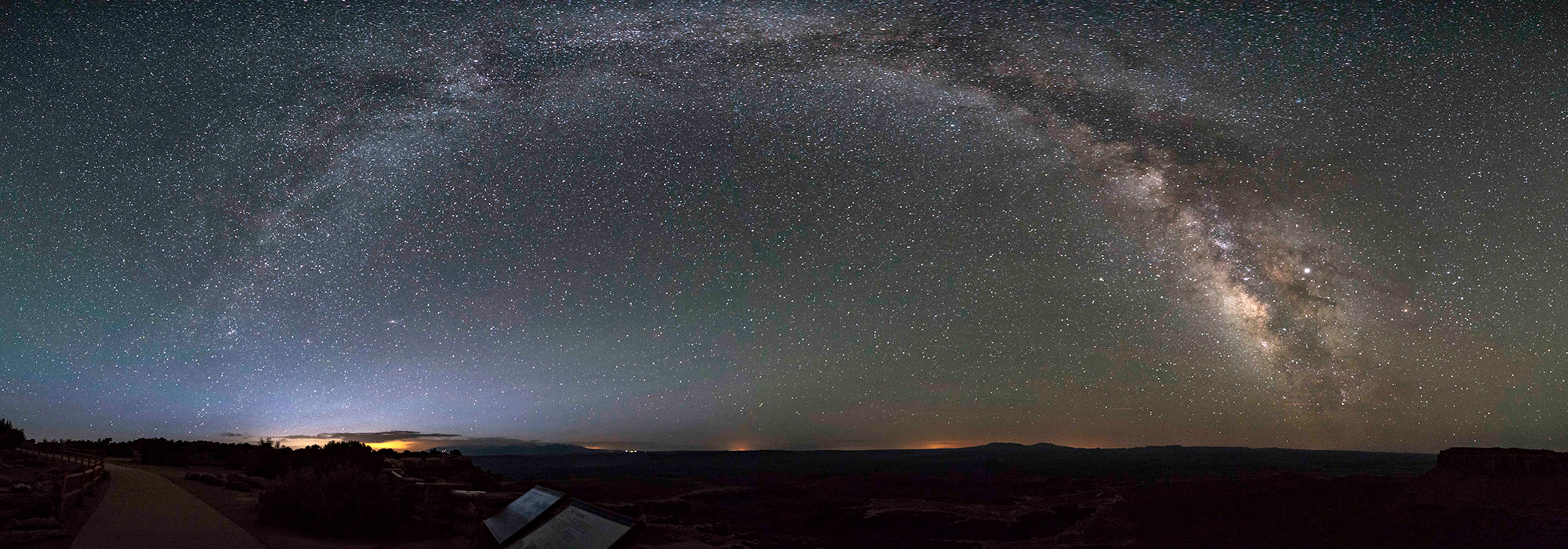



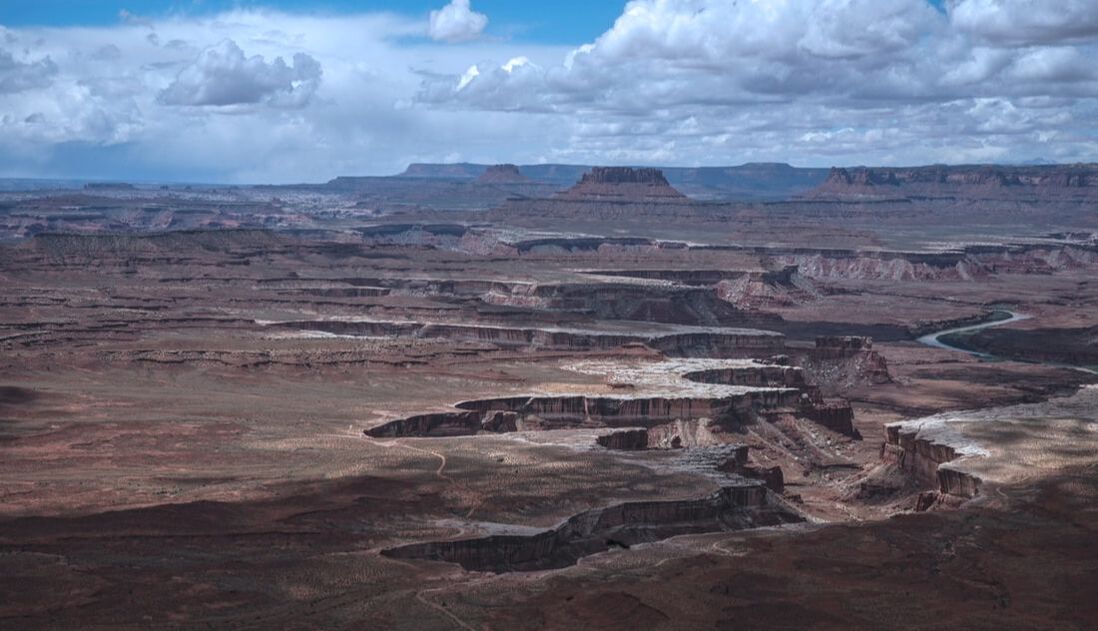



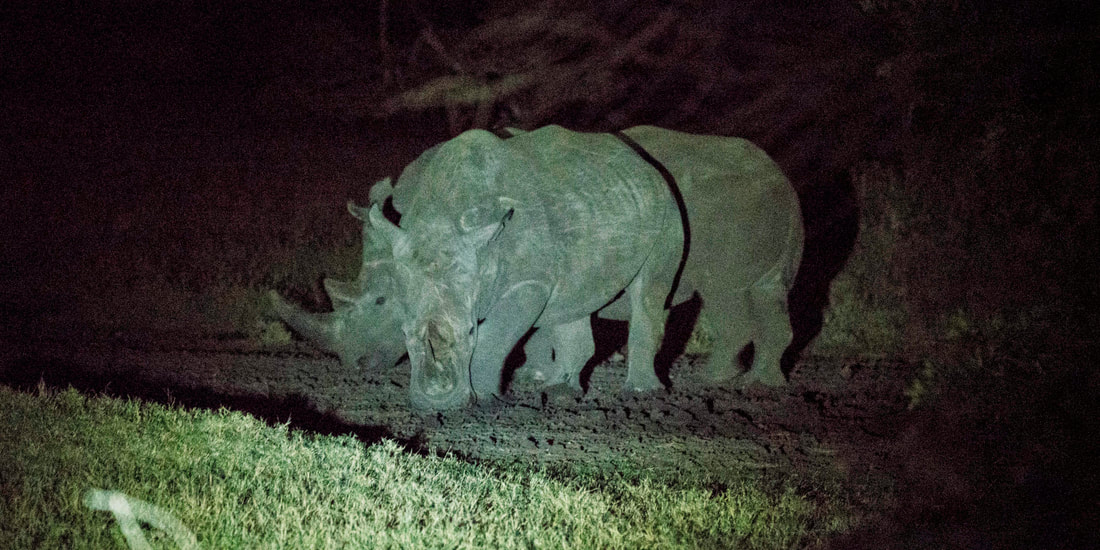


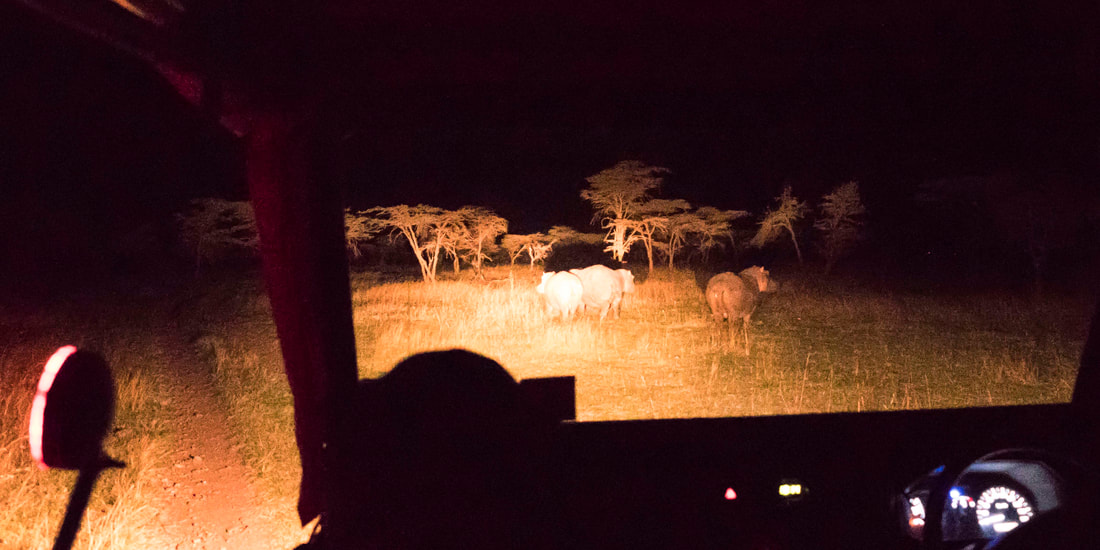


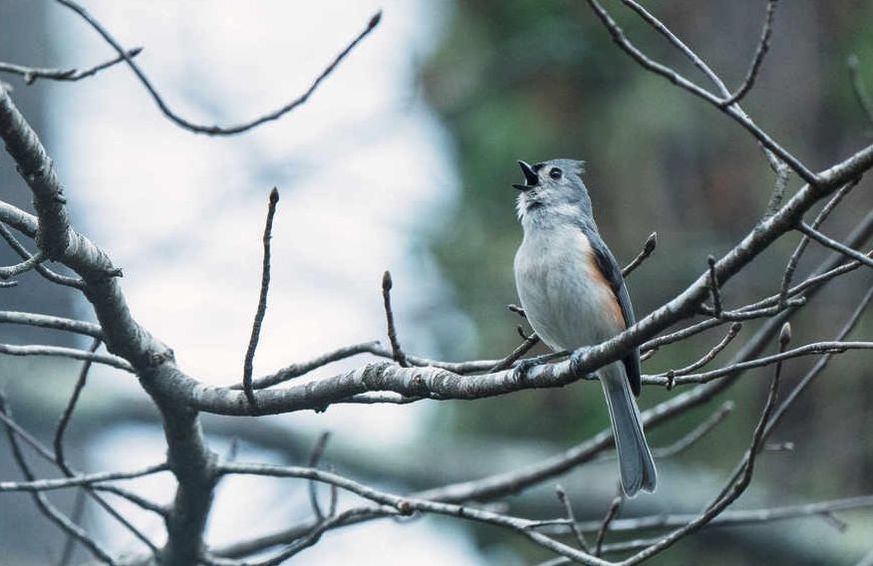
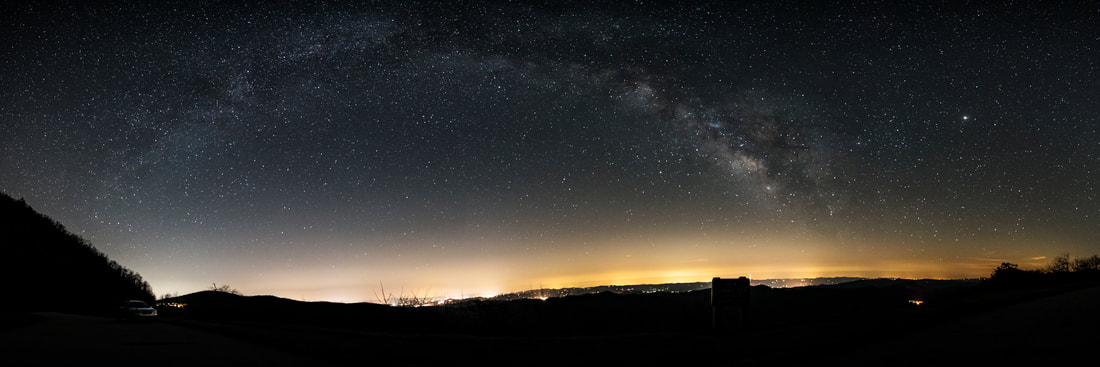



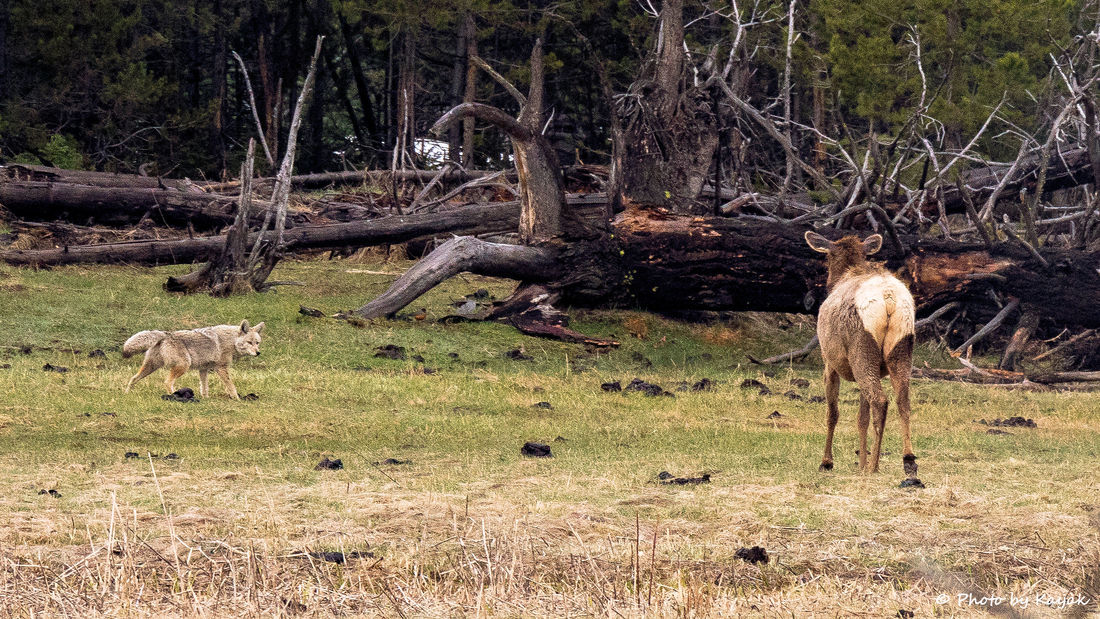

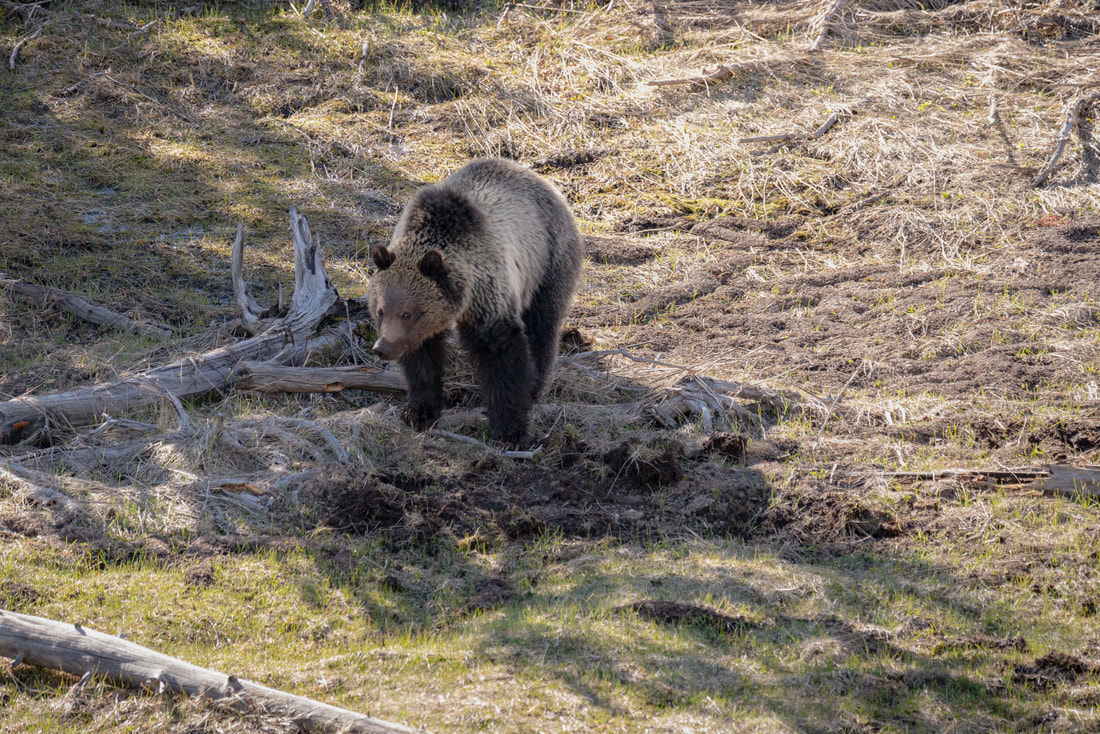


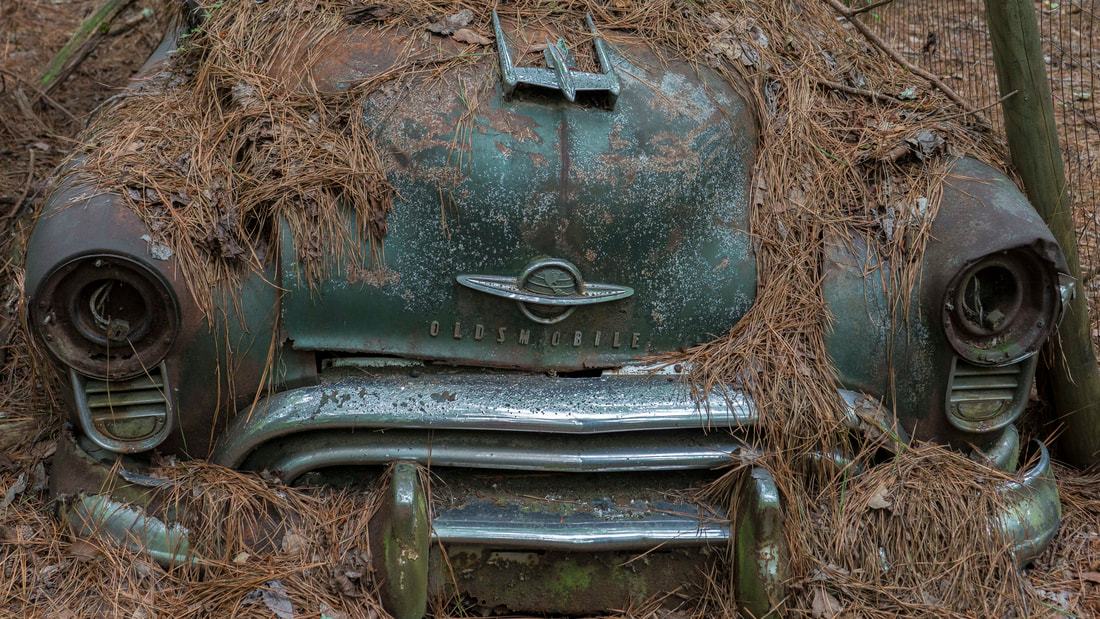

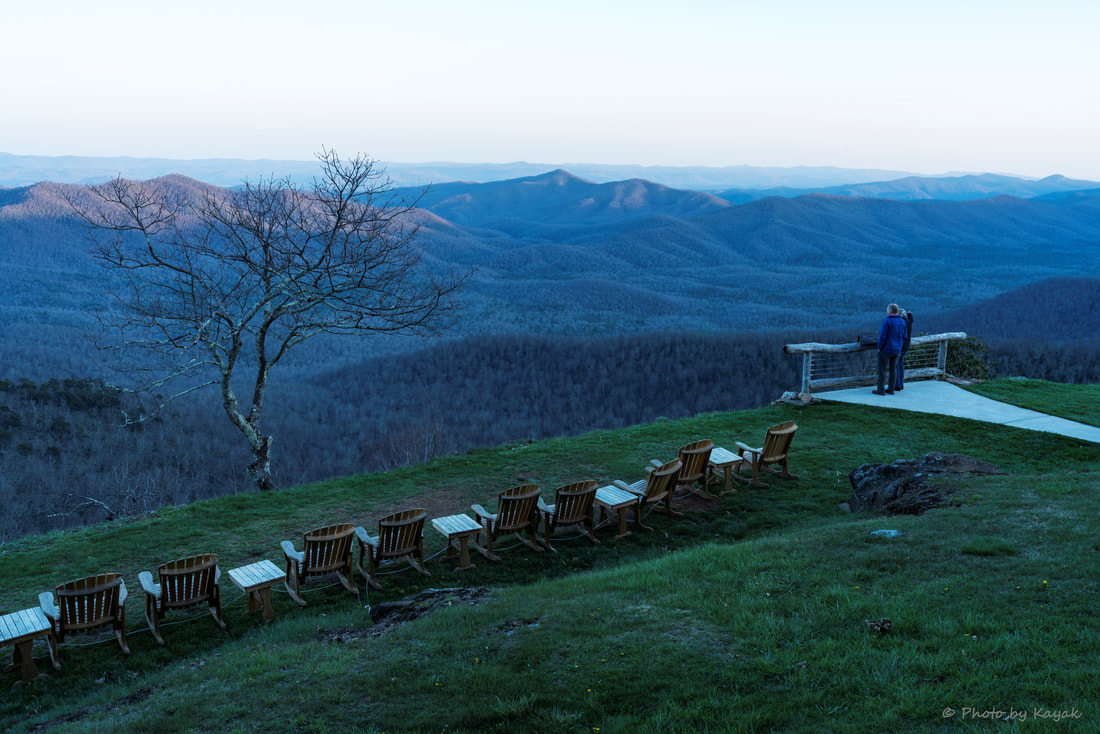
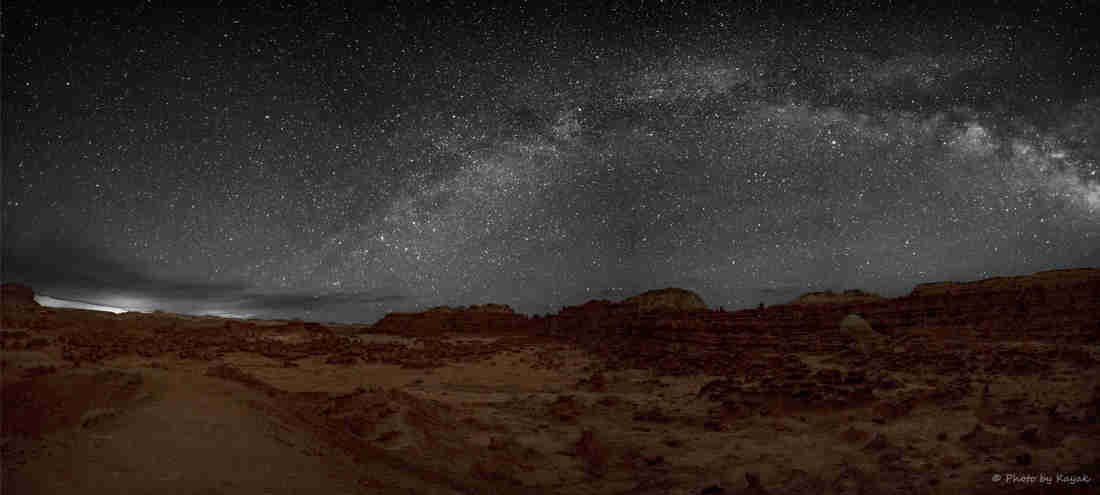


 RSS Feed
RSS Feed